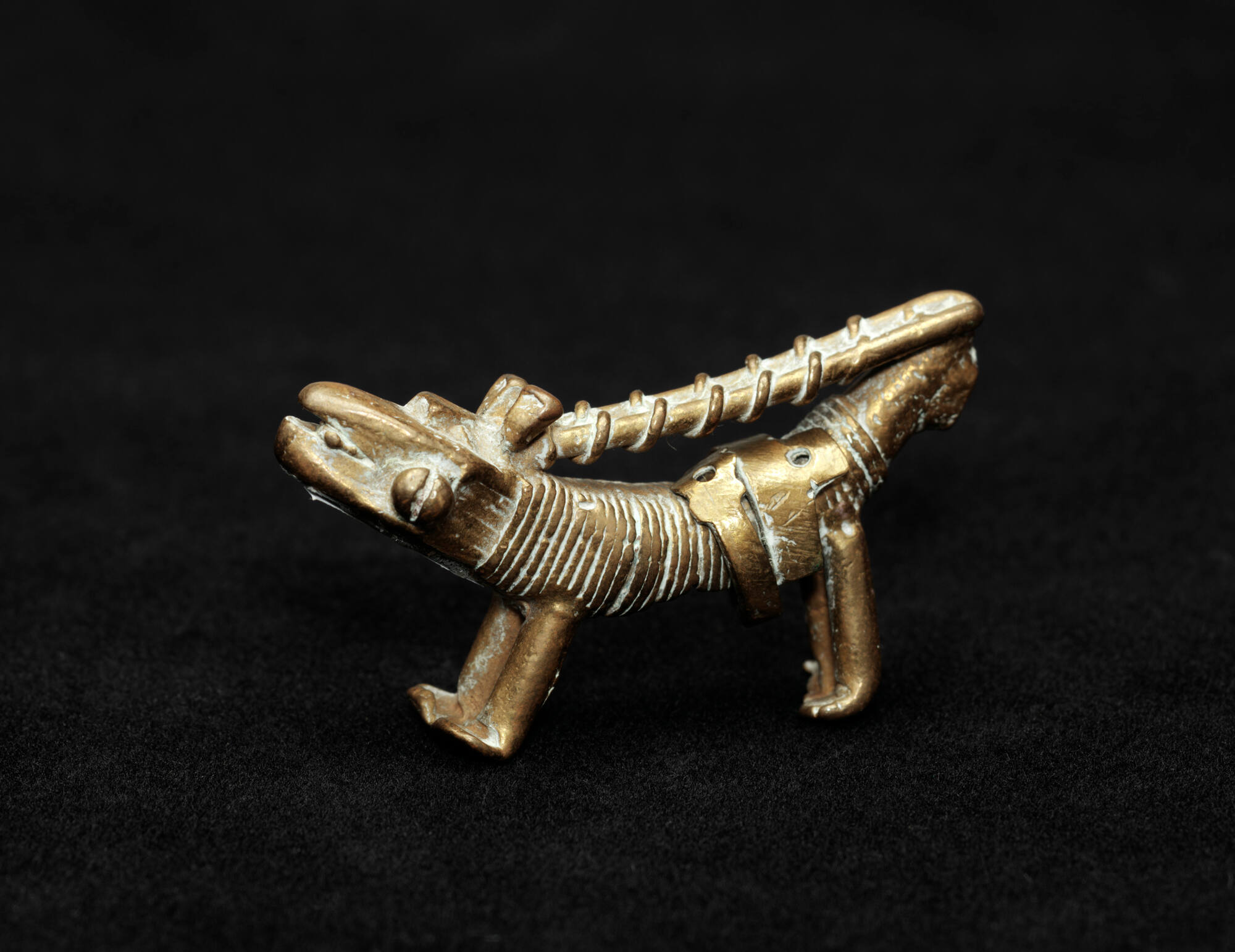West Africa, Akan peoples, Ashanti group
Goldweight in the form of a quadruped, its body encircled by fine bands

Object Details
Culture
West Africa, Akan peoples, Ashanti group
Date
ca. 1900–35
Medium
Brass
Dimensions
1 1/8 × 2 1/8 × 3/8 inches (2.9 × 5.4 × 1 cm)
Credit Line
Gift of Robert M., Louis Dean F., and James W. D. Frasché, in memory of their father, Dean F. Frasché
Object
Number
2005.062.085
BRIEF DESCRIPTIONThis brass weight was used to verify the weight of gold in transactions.WHERE WAS I(…)
BRIEF DESCRIPTIONThis brass weight was used to verify the weight of gold in transactions.WHERE WAS IT MADE?This goldweight comes from Ghana, West Africa.HOW WAS IT MADE?Akan craftsmen fashioned these weights using the lost wax method – a process that results in only one cast object, each a unique work. The artist forms the object out of softened wax (or uses an organic object such as a seed pod), covers the form with slip and clay, and finally heats the covered form in order to melt the wax (or burn the organic material) and replace it with molten brass. After the cast object cools, the mold is broken to release the object and the object is cleaned – leaving no mold to use again.HOW WAS IT USED?Small brass weights such as these were used between 1400 and 1900 by Akan traders in Ghana and the Ivory Coast to verify equal measures of gold dust.WHY DOES IT LOOK LIKE THIS?Goldweights fall into two broad categories: figurative and geometric. Figurative weights were associated with particular proverbs, an art form that pervades Akan visual and verbal culture. Among the Akan, objects as diverse as patterned kente cloths and staff finials reference proverbs. In a social arena, one may be praised for his ability to recall proverbs and introduce them in public debate. Although figurative goldweights often allude to particular proverbs, the weights are not used as a vehicle for verbal communication or significance; they merely weigh gold. The patterns of geometric weights may have names, but they are not associated with proverbs.This weight may refer to the proverb: “‘If I had known’ always comes too late.” A proverb that parallels the modern American adage, “Hindsight is always 20/20.”












